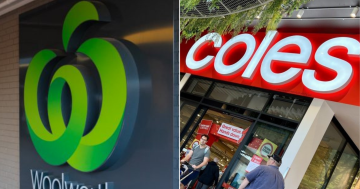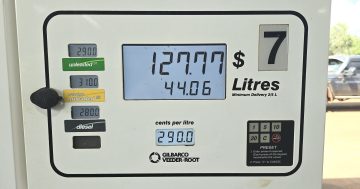
Weipa Servicentre director Richard Ireland (inset) has explained how Weipa’s fuel prices are determined.
THERE has been a high level of anxiety over the price of fuel in Weipa and indeed throughout Australia.
Shell’s provision of fuel in Weipa is undertaken under a contractual arrangement with Rio Tinto.
From time to time, this is put to tender by Rio Tinto, and the resulting outcome will designate the brand of fuel available for the town through Weipa Servicentre.
I understand that bulk fuel is delivered through the Weipa port some 12 times a year.
Notwithstanding that, there is a widely held assumption that Shell would strike the cost for that fuel at the time of delivery into Weipa Port; this is not the case for purchases by Weipa Servicentre.
Our purchase price is set on our site’s actual day of delivery.
We can expect a different buy price every day of the year.
Called the ‘Gate Price’, this is common for the retail fuel industry throughout Australia.
The Gate Price is calculated by fuel wholesalers, such as Mobil, BP and Shell, based on their confidential internal calculations.
Weipa Servicentre has no influence or visibility in that process and purchases the fuel under a supply agreement with Shell – essentially like a franchise agreement.
Once we know the Gate Price for fuel purchased on a particular day, including federal excise tax, GST and an additional road delivery charge, we can calculate the average cost for each type of fuel held.
Our two sites – Evans Landing and Boundary Road – have very different sales volumes and delivery patterns.
For fairness to the consumer and our business, it is necessary to calculate the average cost of fuel after each delivery for each fuel type.
Once that average cost per litre for stock on hand is calculated, we add a fixed cents per litre margin.
We do not add a percentage margin, as this would be unfair on consumers in times such as this when fuel prices spike.
This margin is to cover a range of retailing costs relating to administration, wages, power, leases, rates, corporate taxes and other government charges on retailing activities, other expenses of running the business and return on investment.
This arrives at the retail price.
Our fixed cents per litre margin was established before 2009 and is increased periodically by All groups CPI for Australia(series ID A2325846C), as published by the Australian Bureau of Statistics.
This CPI change was not applied to the margin between December 2017 and March 2020, and again, it was not applied between March 2020 and March 2022.
In those three and two-year periods, we absorbed the increase in CPI as a “real” reduction in margin through the periods.
The increased cost of running the Servicentre with 46 employees, additional power for extra refrigeration and air-conditioning and other expenses under the new build forced us to update the CPI in early March.
Still, significantly, we DID NOT increase the margin in real terms above the CPI-adjusted formula fixed cents that we have applied since before 2009.
On March 10, 2022, we experienced a one-day increase in our fuel cost price that should have been calculated through to a retail price increase of 19 cents on unleaded fuel and 31 cents on diesel.
Our manager decided not to increase the prices by that much in one day and implemented price rises at 9.08am and after the close of trading at 8.08pm that day.
Then again, after the close of trading at 8.08pm on the 11th, ready for Saturday morning.
By the time the Friday evening price was implemented for the Saturday start of trading, we had received fuel at yet a further increased cost, which caused a further rise in the price.
This made the increase a total of 25 cents for unleaded 42 cents for diesel over three days.
These increases were a catalyst for a social media storm in which we have, unfortunately, unfairly received the blame for price increases.
Our staff have been ill-treated and abused and our reputation damaged. At the same time, we lost margin trying to absorb some of the shock increases and have not arrived at any additional margin.
I note one social media comment that claimed the price went up three times in one day.
The sign on March 10 would have said 2.099/2.229 at 6am when we opened. It changed to 2.169/2.289 at 9.08am after we received our new cost.
We absorbed that rise on that day to such an extent we were effectively making a nett loss on every litre of fuel sold.
Then after the close of trading at 8pm, the sign was set to 2.239/2.349, ready for the following day at 6am. An observer may have seen three prices, but we did not trade at three prices.
An additional source of misunderstanding may be the knowledge that some employees within the Rio Tinto Weipa sites have regarding Rio Tinto’s cost of fuel.
From customer feedback to staff, I understand that a cost price is displayed on-site in some mine areas.
The description of this price appears to be Rio Tinto’s contract price which is rightfully based on their substantial buying power and is without the federal excise tax of 44.2 cents, or GST.
I, too, would be incensed if I thought that price per litre was the buy price for the Weipa Servicentre.
I can assure all concerned it is nothing like our cost. Weipa Servicentre and our family take pride in our fairness and good business practices.
I trust this explanation assists in understanding the situation and that we have not, do not and will not seek to take advantage of the Weipa community.
We have been in the town for over 50 years, and we attach a good deal of pride to the way we conduct ourselves in business and the offerings that we make through Weipa Servicentre.
It is frustrating and disappointing that we are the subject of complaint and innuendo without being asked how it works, especially when we try so hard to do the right thing at every turn.
There is another factor at play in the world fuel price at present – the war against Ukraine.
I take the view that the Western world has a choice.
Either don’t disrupt the balance of prices in our markets and pretend the Ukrainian people don’t matter; or accept there is a – hopefully – short-term disruption to our economy and support the children, women and men of Ukraine in whatever way we can.
Either way, there is a cost – on our conscience or our wallet.
I trust this assists your understanding.











